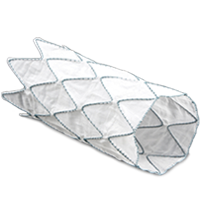Biomedical textile use has exploded in recent years and has resulted in countless saved lives. In our previous post, “3 Ways Medical Textiles Can Save Lives,” we addressed the first important life saving method–prosthetic implants.
 Prosthetic implants work in many ways to assist the body in functioning. Examples of use we mentioned in our previous post were in hard and soft tissue, dental, and vascular applications. Critical properties of an implant are porosity and fiber size. Toxicity is also important to look at, as it can mean life or death if a procedure interacts poorly with the implant material. Whether a material is stable or degradable should be determined and used according to its purpose, such as a biodegradable material for a more temporary implant.
Prosthetic implants work in many ways to assist the body in functioning. Examples of use we mentioned in our previous post were in hard and soft tissue, dental, and vascular applications. Critical properties of an implant are porosity and fiber size. Toxicity is also important to look at, as it can mean life or death if a procedure interacts poorly with the implant material. Whether a material is stable or degradable should be determined and used according to its purpose, such as a biodegradable material for a more temporary implant.
The next two ways webbing saves lives are when it is used in aortic repair and as heart valve replacements.
-
Aortic Repair
An aortic abdominal aneurysm, or AAA, occurs when an artery wall weakens and can burst. It is a catastrophic, life-threatening condition that can be prevented by threading a woven AAA device into a position that will support the affected artery. This tubular prosthesis of biomedical textile becomes one with the repaired vessel through time and by inserting it via a catheter the procedure is less invasive than open heart surgery.
Repairing an artery using biomedical textiles typically involves using what the medical industry terms a “narrow fabric,” which is any non-elastic woven textile that is 12 inches or less in width and has a woven selvage on each side.
-
Heart Valve Repair
A heart valve textile is a medical fabric supported by a polymer frame structure that is threaded into position using a catheter. The procedure is called trans aortic valve replacement or TAVR for short. To gather separated material from the diseased vessel during surgery, a tubular tapered narrow fabric is also used. It is threaded just outside the replacement valve, protecting downstream vessels from displaced debris during the procedure. Upon completing the valve replacement, the device collecting debris is compressed and withdrawn.
As you can see, using biomedical textiles have greatly impacted medicine for the better by providing meticulously made fabrics and structures that support bodily function and life. Prosthetic implants, aortic repair and valve replacement are only a few examples of their impact on human life and wellness.
Bally Ribbon Mills proudly produces prototypes and full-scale production lines of woven tapes, webbing, prosthetics and dental biotextiles. Our medical textile engineers, and weavers work in confidence to protect your intellectual property and help create life-changing and life-saving biomedical textiles. You can also trust us to manufacture your devices in a certified clean room while following rigorous quality standards such as ISO 13485:2016.
Contact us today for more information on our medical textiles.






